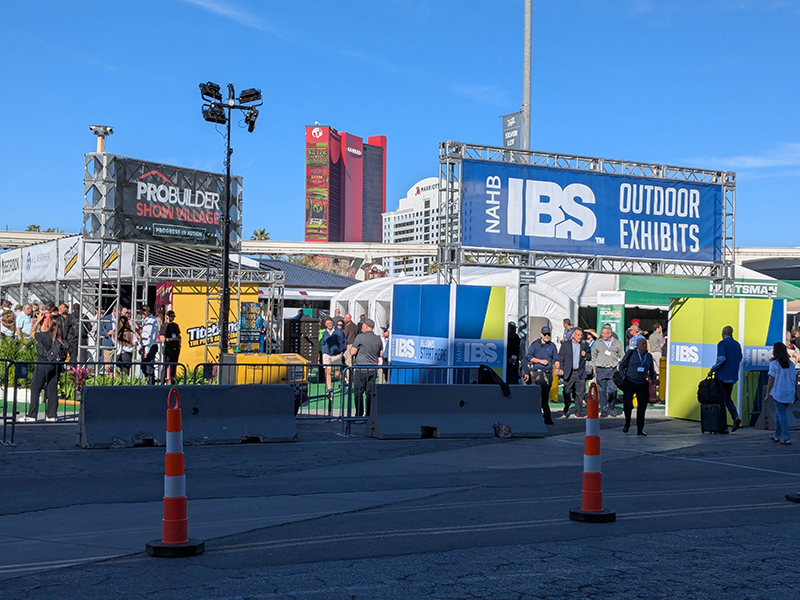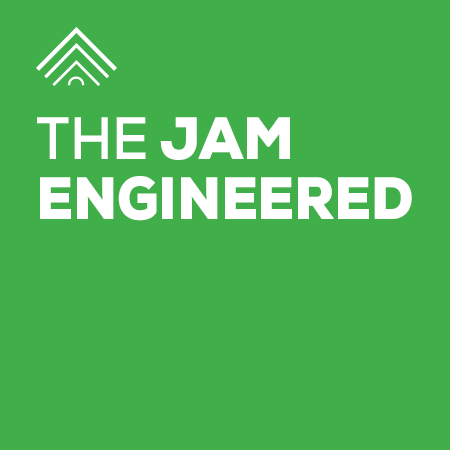Windows and Doors Meet the Future of Design

The International Builders’ Show drew approximately 1,800 exhibitors packed into 728,000 square feet of space this year in Las Vegas, Nevada. Largely renowned as the largest annual light construction trade show in the world, this year’s event pulled together the latest products, technologies and trends in residential construction, including new building materials, construction techniques and design ideas. See products from the show.
Focusing on challenges for trade, tariffs and labor
Key takeaway: A blend of cautious optimism and practical strategies will help the industry navigate the challenges posed by labor shortages, evolving product channels and the impacts of new tariffs.
The 2025 International Builders Show (IBS) was representative of significant economic and labor trends, shedding light on the industry's response to an aging housing stock and the remodeling market's potential. With interest rates remaining elevated, builders are increasingly interested in renovating existing homes rather than pursuing new construction. This pivot is fueled by the need to modernize and upgrade aging housing while recognizing the modest improvements in housing supply anticipated for the near future. The event emphasized the importance of adapting to these changing dynamics, with many industry leaders discussing sustainable pathways for growth amid persistent economic challenges.
Addressing labor shortages stood out as a critical theme at IBS 2025, with a strong focus on utilizing technology and innovation to streamline construction processes. Advances in automation, artificial intelligence (AI), and project management tools are increasingly being integrated to enhance jobsite efficiency. Builders and construction companies are recognizing that optimizing the use of technology can bridge the workforce gap, allowing operations to continue smoothly despite the ongoing challenges of finding qualified labor. This shift showcases a proactive approach toward ensuring that the industry remains competitive and responsive to ever-evolving demands.
Manufacturers also played a crucial role at the show, leveraging the opportunity to gauge builder interest and feedback for upcoming products. Notably, door and window companies have diversified their offerings as mergers and acquisitions have led to more comprehensive portfolios. Larger booths filled with various product lines illustrate a trend toward cross-sector collaboration, fostering relationships that could spur innovation across different building materials. As manufacturers explore diverse channels, the show serves as a critical platform for sharing ideas and aligning products with market needs, which is essential in a time of adaptation and transition.
Moreover, concerns regarding impending tariffs on imported products from Canada, China, and Mexico were prevalent among exhibitors. Many door and window manufacturers expressed uncertainty about how these tariffs might affect their operations, particularly amid heightened competition for domestic materials. While some companies that rely exclusively on U.S.-made goods remain less concerned, the broader implications for the supply chain and market dynamics remain under scrutiny. The National Association of Home Builders articulated a cautious yet optimistic outlook for 2025, acknowledging the current hurdles of labor shortages, rising material costs, and high mortgage rates, while committing to collaborate with the new administration for sustainable solutions going forward.
Trends from this year's show
Key takeaway: The growing importance of energy efficiency, expansive designs, aesthetic harmonization, durability and technological integration in modern window and door solutions reflects evolving consumer preferences and environmental considerations.
Some of the trends coming from the show are expected (a ramp-up from last year's offerings) and some are slightly surprising.
Emphasis on energy efficiency — Manufacturers are continuing to prioritize energy-efficient solutions, seen in advancements in glass technology, frame materials and sealing techniques to meet and exceed Energy Star requirements. Many companies are teaming up to bring energy-efficient vacuum insulating glass solutions to residential doors and windows.
Larger, glass-forward designs — The demand for expansive windows and doors that maximize natural light and offer homeowners seamless indoor-outdoor living continues to grow and grow. Larger glass pivot doors, sliding door and wall systems, tilt-out awning windows, even IoT-connected pet doors set into large glass patio doors... all are helping to connect homeowners to the outdoors and enhance daylighting.
Modern and vintage aesthetics — Darker window and door finishes, particularly black, remain a popular trend (#2 still beyond the reigning white finishes). But people are gravitating toward wood tones and faux wood finishes are rising in popularity with light ash wood and coastal greys showing up repeatedly across companies. And both warm and cool, and neutral tones, are showing up more in doors (think darker grey-blues and soft wine colors, harkening back to a nostalgic time).
Harmonizing the look of the home is trending, with companies offering windows, doors and entryways, and garage doors that tie the look of the home's exterior together. In particular, garage doors are shining as the new "accent piece" of a home, with trendy finishes, larger tempered glass inserts to bring in more light, and even decorative hardware finishes.
And what's old is new again... While companies are also showcasing clean lines and minimalist designs to complement contemporary architectural styles, there's a swing back to "embracing the old" with historic-feeling doors and windows featuring those nostalgic stained glass elements from America's past that homeowners are coming to appreciate again.
Durability, weather resistance and material science — Manufacturers are focused on developing products to withstand increasingly extreme weather conditions and provide long-lasting performance. Everyone is mentioning how their products are Miami-Dade approved. And these products are both durable and low maintenance, to appeal to homeowners.
Technological integrations — While not always the primary focus, there is always an underlying trend of how building products integrate with other smart home technologies. From switchable privacy glass (even in garage doors!) and smart lock hardware, to high-tech doors with built-in minicomputer interfaces, there are always those products that show just how far the envelope can be pushed in terms of fenestration and the IoT.


